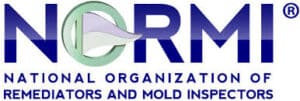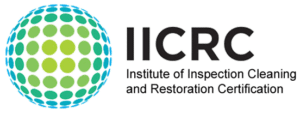Why and Where Mold Grows
Lesson 1 – Introduction to Mold Growth
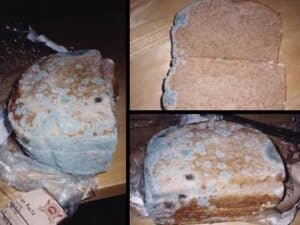
Mold can grow on virtually any organic material as long as moisture and oxygen are present. There are molds that grow on:
- Wood
- Paper
- Carpet
- Food
- Insulation
Because mold eats or digests what it is growing on, it can damage a building and its furnishings. If left unchecked, mold eventually can cause structural damage to building materials.
Molds gradually destroy the things they grow on. You can prevent damage to buildings and building contents, save money and avoid potential health problems by controlling moisture and eliminating mold growth.
Eliminating all mold and mold spores indoors is virtually impossible, but controlling indoor moisture will control the growth of indoor mold.
Lesson 2 – Moisture Problems

Moisture problems can have many causes. Some moisture problems have been linked to changes in building construction practices since the 1970s. These practices led to buildings that are tightly sealed but, in some cases, lack adequate ventilation. Without adequate ventilation, moisture may build up indoors and mold may grow.
A building must be properly designed for climate, site location and use, and its design must be accurately followed during construction or the building may have moisture-control problems.
Delayed or insufficient maintenance can lead to moisture problems in buildings. Undiscovered or ignored moisture problems can create an environment in which mold can grow. Moisture problems in temporary structures, such as portable classrooms, are also frequently associated with mold problems.
Common moisture problems include:
- Leaking roofs.
- Leaking or condensing water pipes, especially pipes inside wall cavities or pipe chases.
- Leaking fire-protection sprinkler systems.
- Landscaping, gutters and down spouts that direct water into or under a building.
- High humidity (60% relative humidity).
- Unvented combustion appliances such as clothes dryers vented into a garage. (Clothes dryers and other combustion appliances should be vented to the outside.)
Some moisture problems are not easy to see. For example, the inside of walls where pipes and wires are run (pipe chases and utility tunnels) are common sites of mold growth. Mold is frequently found on walls in cold corners behind furniture where condensation forms. Other possible locations of hidden moisture, resulting in hidden mold growth are:
- Poorly draining condensate drain pains inside air handling units.
- Porous thermal or acoustic liners inside duct work.
- Roof materials above ceiling tiles.
- The back side of drywall (also known as gypsum board, wallboard, or SHEETROCK®), paneling, and wallpaper.
- The underside of carpets and pads.
You may suspect mold, even if you can’t see it, if a building smells moldy. You may also suspect hidden mold if you know there has been a water problem in the building and its occupants are reporting health problems.
Building Design and Vapor Barriers
Many buildings incorporate vapor barriers in the design of their walls and floors. Vapor barriers must be located and installed properly or the building may have moisture problems. A vapor barrier is a layer of material that slows or prevents the absorption or release of moisture from or into a wall or floor. Vapor barriers can prevent damp or wet building materials from drying quickly enough to prevent mold growth.
Lesson 3 – Humidity
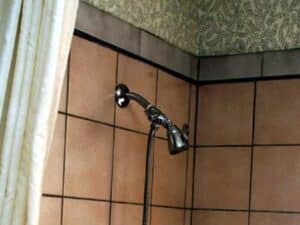
Sometimes, humidity or dampness (water vapor) in the air can supply enough moisture for mold growth. Indoor relative humidity (RH) should be kept below 60 percent — ideally between 30 percent and 50 percent, if possible. Low humidity may also discourage pests (such as cockroaches) and dust mites.
Humidity levels can rise in a building as a result of the use of:
- Humidifiers
- Steam radiators
- Moisture-generating appliances such as dryers
- Combustion appliances such as stoves
- Cooking and showering also can add to indoor humidity.

HVAC System
One function of the building heating, ventilation and air conditioning (HVAC) system is to remove moisture from the air before the air is distributed throughout the building. If the HVAC system is turned off during or shortly after major cleaning efforts that involve a lot of water, such as mopping and carpet shampooing or cleaning, the humidity may rise greatly, and moisture or mold problems may develop.
Condensation
Condensation can be a sign of high humidity. When warm, humid air contacts a cold surface, condensation may form. (To see this, remove a cold bottle of water from a refrigerator and take it outside on a hot day. Typically, condensation will form on the outside of the bottle.) Humidity can be measured with a humidity gauge or meter; models that can monitor both temperature and humidity are generally available for less than $50 at hardware stores or on the Internet.
Lesson 4 – Ventilation Humidity Problems – Heating, Ventilation and Air Conditioning (HVAC) System
Mold growing near the intake to an HVAC system indicates potential ventilation humidity problems. An HVAC system that is part of an identified moisture problem may also be a site of mold growth. Experience and professional judgment should be used when working with the HVAC system; consult a professional if needed.
The HVAC system has the potential to spread mold throughout a building. Known or suspected mold growth in HVAC ducts or other system components should be investigated and resolved promptly. If substantial amounts of mold can be seen growing on the inside of hard surface ducts (e.g., ducts made of sheet metal), consider cleaning the ducts. Although this publication focuses on ducts in homes, the information it contains is applicable to other building types.
If the HVAC system has insulation on the inside of the air ducts, and the insulation gets wet or moldy, it should be removed and replaced because the material cannot be cleaned effectively.
Controlling moisture is the most effective way of keeping mold from growing in air ducts. Steps to control moisture in ductwork include:
- Promptly and properly repairing any leaks or water damage.
- Removing standing water under the cooling coils of air handlers by making sure the drain pans slope toward the drain and the drain is flowing freely.
- >Making sure ducts are properly sealed and insulated in all non-air-conditioned spaces so moisture due to condensation does not enter the system and the system works as intended. To prevent condensation, the heating and cooling system must be properly insulated.
- Operating and maintaining any in-duct humidification equipment strictly according to the manufacturer’s recommendations.
- Making sure that carpets, drapes, furniture, and other furnishings are dried promptly after they have been cleaned.
Lesson 5 – Structural Integrity and Mold Growth
Molds gradually destroy whatever they grow on, so preventing mold growth also prevents damage to building materials and furnishings.
If a mold and moisture problem goes unaddressed long enough, structural damage is likely to result. For example, if a roof is allowed to leak long enough, molds can weaken floors and walls by feeding on the wet wood.
When mold is suspected of causing damage to the structural integrity of a building, a structural engineer or other professional with relevant expertise should be consulted.
Lesson 6 – Crawl Spaces
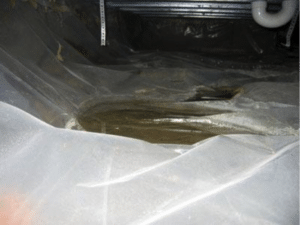
Crawl spaces where relative humidity (RH) is high are common sites of hidden mold growth, particularly if the crawl space has a bare earth floor. The soil will wick moisture, through capillary action, from moist to dry areas. The relative warmth of the crawl space will dry the soil by evaporation, adding this moisture to the air in the crawl space where it can cause mold to grow. Also, in areas where the water table is high and weather conditions are suitable, ground water may enter a crawl space.
The moisture that accumulates in a crawl space may also enter another part of the building and contribute to mold growth there. Moisture can pass from a crawl space into a building through cracks in walls, floors and ceilings.
Crawl spaces should be designed specifically to avoid moisture problems.
Drying Buildings, Building Materials, and Furnishings
Buildings and building furnishings will often get wet. They must be dried or “allowed to dry” quickly (within 24-48 hours) in order to avoid mold growth. In general, increasing air circulation and temperature will increase the speed of drying.
Commercial firms that do mold remediation work or work on water- and fire-damaged buildings often use large fans, dehumidifiers and other equipment to dry wet buildings and items quickly before mold has a chance to grow. This action can save money in the long run, because if the building or furnishings are dried completely and quickly, mold will not grow, and a mold remediation will not be needed.
Lesson 7 – Floods
During a flood cleanup, the indoor air quality in your home or office may appear to be the least of your problems. However, failure to remove contaminated materials and to reduce moisture and humidity can present serious long-term health risks. Standing water and wet materials are a breeding ground for microorganisms, such as viruses, bacteria and mold. They can cause disease, trigger allergic reactions and continue to damage materials long after the flood.
Buildings that have been heavily damaged by flood waters should be assessed for structural integrity and remediated by experienced professionals.
Please note
that the guidelines covered in this course were developed for damage caused by clean water (not flood water, sewage, or other contaminated water).
Source: United States Environmental Protection Agency (EPA)
Contact Aspen for
anything related to water damage cleanup, mold testing, mold removal, or air ducts: Call 978.328.0882 or
email [email protected].Aspen Environmental professionals are licensed and insured and members of the National Organization of Remediators and Mold Inspectors (NORMI), the National Air Duct Cleaners Association (NADCA), and the Institute of Inspection Cleaning and Restoration Certification (IICRC).
